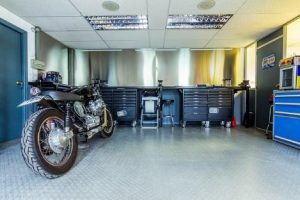How to Transform Your Garage into a DIY Studio
 Your garage may be meant for cars, sure, but that does not mean you have to store cars there.
Your garage may be meant for cars, sure, but that does not mean you have to store cars there.
The space is yours, and you can do whatever you want with it – within reason. Nowadays, people are choosing to make their garages into a creative space for the art of their choosing, like music or photography.
If you are the more creative type, and you do not feel the need to store your car within the garage, perhaps it is time to consider making your garage into a DIY studio. Make sure you secure your space with a garage door repair. Pick your passion, and then embark on the journey of recreating your space.
Here are a few tips to start making your garage into the creative space you have always wanted.
1. Assess the Garage
The first thing you need to do is tour your garage, and figure out what will need to be remodeled or fixed with the help of garage builder company – in order to create the perfect space.
Do you need different flooring? Will you keep the garage doors? Do you need more doors, or windows? Do you need a garage door opener repair? What kind of studio are you hoping to create?
If you are trying to create a music studio, consider padded flooring, or something that will better support the acoustics of the space. If you are creating a paint or photography studio, look for something non-reflective, or something easy to clean up in the case of paints.
Essentially, the first step is to assess if you will be needing a garage door spring repair and then begin planning the changes you might need to make.
2. Clean Out the Space
This may seem obvious, but once you know your plans, you need to clean out the space.
Find storage for the things you want to keep, and consider tossing things you no longer need. For any tools you wish to keep that may be important to your new DIY space, begin considering storage options or shelving for supplies and tools. Additionally, if you need a short-term solution to make the area safe, you could consider renting fences from companies like chicago fence rental company. This is a great option to guarantee the safety and privacy of your DIY space.
Once you have the space cleared and ready, it is time to begin the actual remodeling.
3. Make Sure You have What You Need
Important things to consider are lighting, electrical outlets, air flow, and anything else you might feel necessary.
You do not want to get overheated working in your garage, so consider something like a fan or a portable A/C unit to keep you cool. Another thing to consider is repairing or redoing your garage door if you are not picky about privacy – somewhere like superiorgaragedoorrepairs.com/ – can help get your garage door looking and functioning well. An open garage is a much cheaper option for keeping yourself and your space cool.
You will also need to make sure you have electricity running to the garage, particularly if your new space is for photography, music, or woodworking. You will need electricity for your equipment, so make sure you will not need to have more outlets installed. The same goes for lighting.
4. Make It Cozy
Once you have the basics done, such as the flooring and lighting, it is time to truly make the space your own creative outlet.
Maybe you want to paint the space, or find shelving and places for your equipment. You will also want to make the space comfortable, be that with radios or comfortable chairs. Basically, you need to make your new DIY studio exactly the kind of place you would feel comfortable creating art.
5. Enjoy It
Once your space is complete, it is time to create! Whatever you use your new garage studio for, it will be a wonderful way to use your space to create and do all kinds of DIY projects.
Whether you are painting, taking photographs, creating music, woodworking, or whatever your heart desires, your new garage space will be everything you need to release your creativity. Though this list is only a simple overview of creating your new DIY studio, hopefully you will feel inspired to create something amazing.
Who says your garage is only for cars, anyway?
